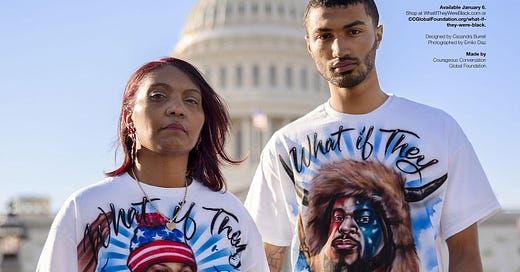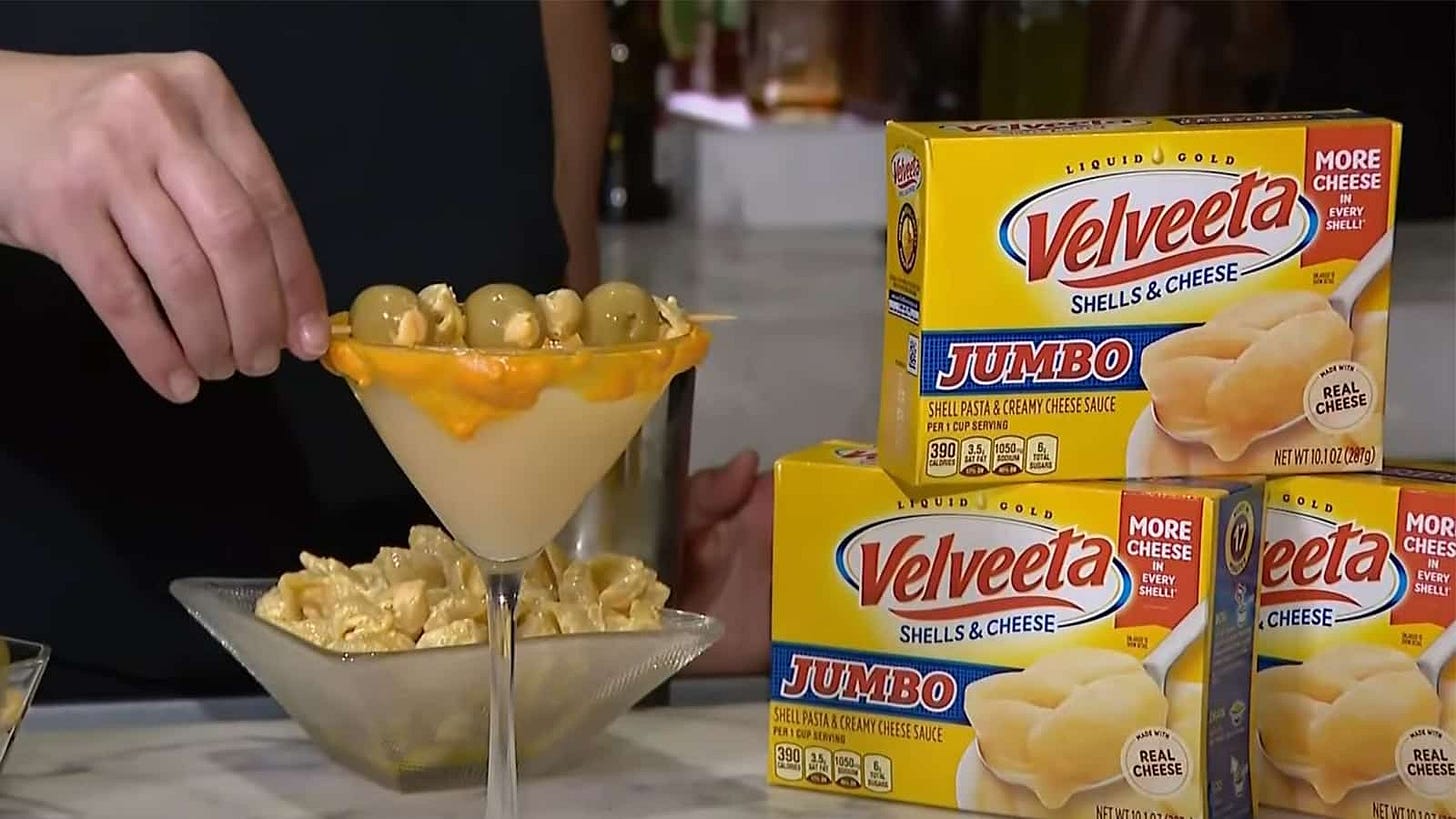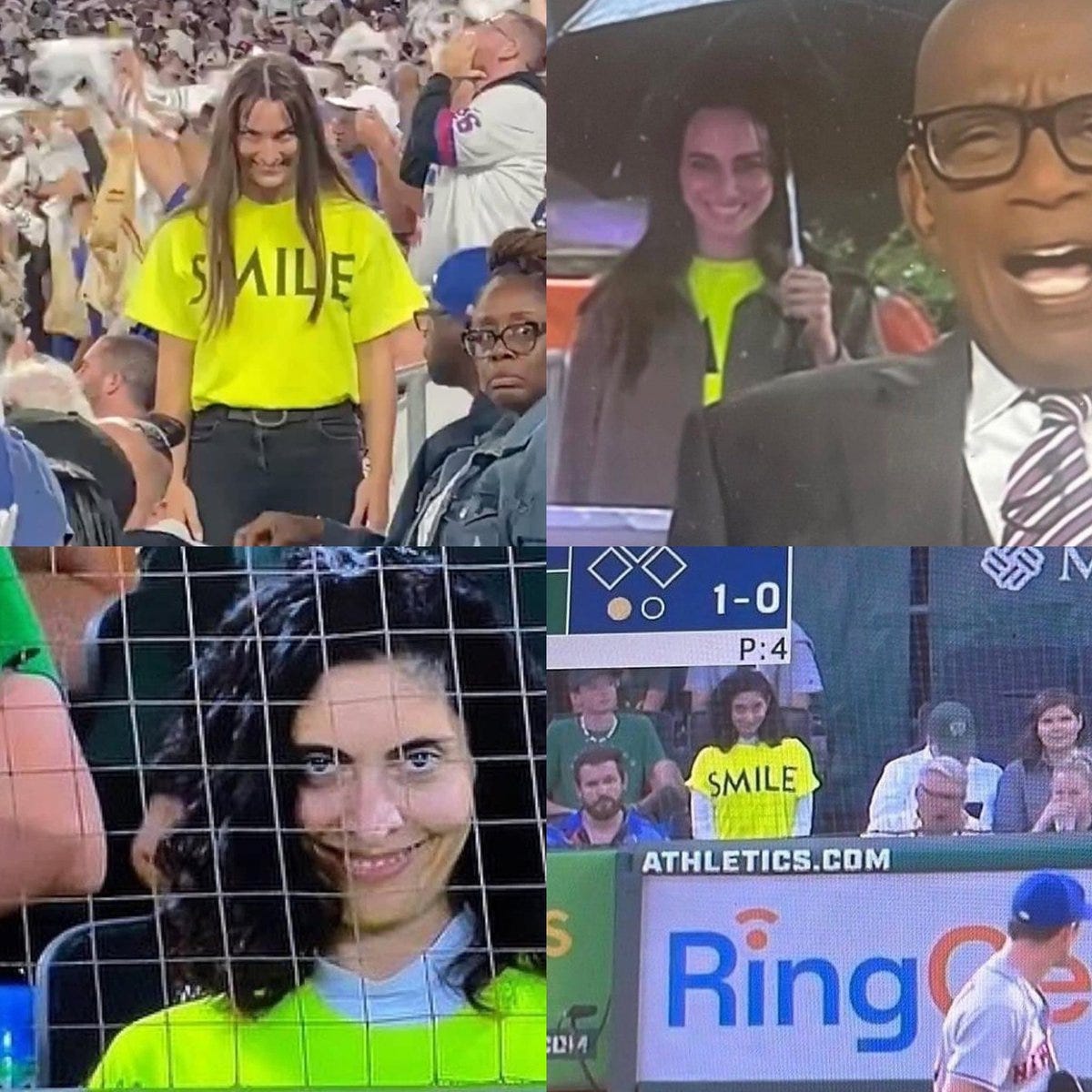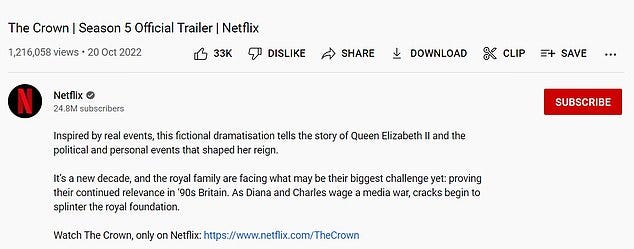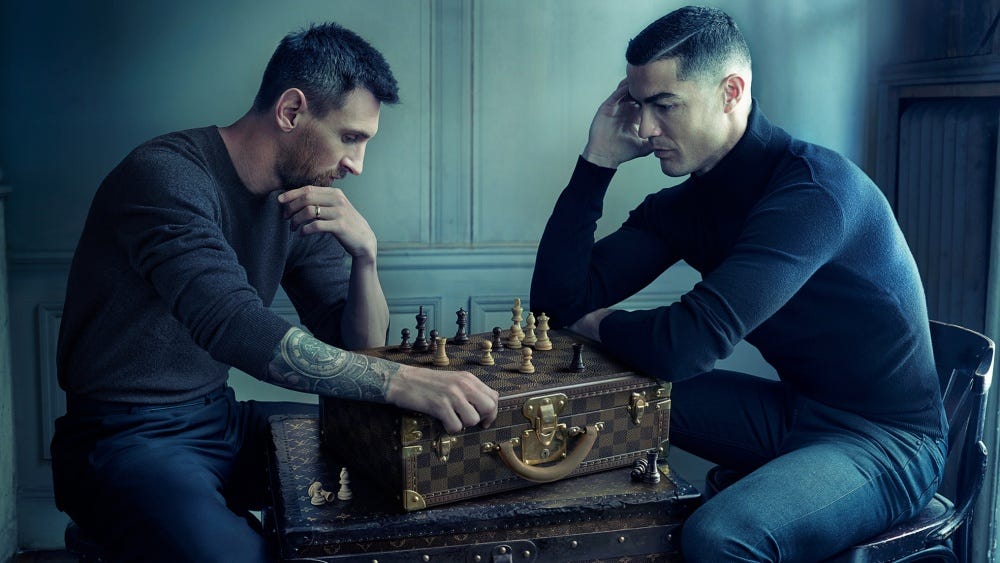2022, As Told Through Ads
Goodbye Serena, Crypto, Twitter, Roe, The Queen. Hello AI, Miss Flo, Dance Music.
I love marketing and its ability to create and reflect culture. The last couple of years I’ve been tracing the year through advertising (here’s 2021 and 2020), and this year did not disappoint.
January: 2021 Redux
A year ago there was an insurrection. A wild, strange day where much of America was glued to the television, watching a melee of right wing conspiracy theories do the unthinkable—storm the Capital. The nation is still grappling with the stark divisions highlighted by this moment, and so is advertising. We’re creators by nature, attuned to culture, and desperate to make a dent in culture. Goodby made a campaign with Courageous Conversations, highlighting how differently Black people would be treated, called “What If They Were Black?” with influencers, spots, and an even more impactful channel—airbrushed T-Shirts.
February: Crypto Bowl
In February, The Cut dropped this vibe shift article, and we were ready to move on to something new. Was it, just maybe, crypto?
Crypto was a fever dream of opportunities, new narratives, and scams. Frothy articles taught us new acronyms like DAOs and NFTs. My mom called me to ask if I knew about Beeple.
And the money flowed. Enough for companies like the now-maligned FTX to buy expensive Super Bowl ads. FTX made a 2 and half minute ad with Larry David to make fun of people who miss the next big thing, while cyrpto.com hired Brad Pitt to hype the ‘bravery’ it takes to embrace crypto. Then there was Coinbase, with a simple bouncing QR code, which swept the country’s attention and got so many downloads that it crashed the app.
March: For Mexican Pizza
The year’s best influencer campaign. Doja Cat’s tweets about how much she misses Mexican Pizza turned into Taco Bell gold. She wrote a verse on TikTok for them to tee up the return of Mexican Pizza in May, giving Taco Bell a huge sales lift; by August the chain sold 20 million Mexican Pizzas. In a nod to true integration, the partnership between Taco Bell and Doja Cat continued on.
April: We Exist All Year Round
Could it be? Advertisers talking to diverse audiences outside of designated months? I don’t know what was in the water, but the intersectionality of Asian American and LGBTQ identities hit hard in April, a month before AAPI heritage month and two months before Pride.
Not only did the sleeper hit movie Everything Everywhere All At Once about breaking generational chains around acceptance of a lesbian daughter in a Chinese-American family, Oreo also released a short about coming out to a Chinese American family. Maybe brands are getting the memo that identity is not just a thing once a year.
May: Tesla Shade
Remember Tesla before Elon was a dirty word? You know, the only EV car anyone cared about? Well, besides Elon tanking Twitter and Tesla in one $44bn swoop, there are other pressures on Tesla. There are lots of new kids on the block when it comes to EVs. From upstarts like Rivian and Lucid to legacy brands building their EVs for the next generation, it’s going from a few models to a crowded marketplace. Cue lots of ads, especially from legacy brands who have the money and infrastructure to advertise.
This isn’t the best EV ad out there, or even the best Ford EV ad. But the Tesla shade is strong, and prescient.
June: Roe No, Bey Yes
I spent a shit ton of time talking about the end of Roe here, here, and here. I couldn’t do but write and write, and hope that it helped someone make sense of this turn of events.
The social agency The Variable got more creative. It built the Dystopian Shopping Network, with wickedly funny QVC-style videos shilling Woombies, plush wombs that could be sent to anti-choice politicians so they could have their very own wombs to play with, instead of playing with ours. You can still send them, because anti-choice politicians haven’t gone anywhere, and all the proceeds go to Planned Parenthood.
Beyonce released Break My Soul, which was the undisputed song of the summer. She’s also a brand in and of herself and a marketing genius; whereas past albums have been visual feasts and tied to major events like her Super Bowl appearance, this song just appeared, with a simple lyrics video, and still drove a frenzy of attention, speculation, and celebration. It was an anthem for a vibe shift, a movement towards joy and freedom, and the first drop of an album that set the tone for the rest of the year.
July: Ew and AI
This was the year of shockingly bad food combos, in what Fast Company calls “gross-out marketing.” Is it TikTok’s fault? Probably.
Tropicana made orange-juice-approved cereal, and Pepsi tried to make pilk happen, that is, a combo of milk and Pepsi. But Velveeta takes the cake with this Velveeta martini to promote Goldbelly. I’m not ok. And dropping this in July? Come on.
This year marked radical leaps in the use of generative AI. Anyone with a device and a connection can create imagery that reflects their wildest imagination, or generate copy that’s remarkably accurate. Heinz Ketchup, which has been having a field day with the brand linkage it’s established over 100 years of existence, used AI image generation to drive home the point that it stands for ketchup; when users type “Ketchup” into DALL-E, you can guess what the AI comes up with.
August: Bye Serena
Absolute legend Serena Williams said goodbye to the courts—and maybe her lucrative brand contracts? Unclear on the latter; however Chiat\Day made Gatorade’s beautiful ode to Serena, narrated by Beyonce. I spent a couple years at Chiat, and know how much Serena inspired the teams to do their best ad work, as she’s inspired so much of the world to be their best selves. This one is ace.
September: Hollywood Rules
In which Florence Pugh became an icon. Don’t Worry Darling, a film directed by Olivia Wilde starring Pugh, Harry Styles, Chris Pine, and Gemma Chan, had a complete meltdown of a press tour. Rumors abounded as Pugh skipped pressers and wandered about freely drinking spritzes while Wilde, Pine, and Styles sweated at press questions. There was spit-gate, some involvement of can-do-no-wrong Ted Lasso, Shia LeBoeuf rumors, and many more angles that demonstrated that, despite the rise of TikTok and YouTubers, Hollywood isn’t dead yet.
October: The Horror
I have a working theory that this year we’re all desperate for feeling—this article in the Vulture calls it “that feeling of being utterly obliterated by what [you] see onscreen”. And, as a person who hasn’t touched a horror movie for ten years, I found myself all of a sudden craving the shock and ick of horror movies. Seeking that delicious bite of fear, I watched Us, Candyman (the old one and new one), The Invitation, Midsommar, The Watcher, and other chillers and thrillers.
The ad industry was down too, with a spooky Uber Eats ad about what happens when the candy promos run out, and an iconic IRL campaign for the movie Smile, in which smilers haunted the cameras of live events to promote the film.
November: God Save the Queen
The Queen of England is dead. After 70 years of rule, Queen Elizabeth passed. The Commonwealth, Anglophiles, Diana conspiracy theorists, Harry and Megan stans, and post-colonial theorists had much to reflect on. And so did Netflix, host of the very popular series The Crown. As the series caught up with modern times, it finally put a disclaimer on its marketing that it was “inspired by real events.”
It was also Thanksgiving, a celebration of Pilgrim’s escape from the British crown to the America’s for the sake of religious freedom, a narrative complicated by the colonization and oppression of indigenous people. Today, for many Americans, it’s less a time to reflect on a complex history or even express simple gratitude; it’s a time to take a load off, wear sweatpants, and eat with abandon.
It’s also the one day a year people actually care about cranberry sauce, leading to my absolute favorite ad of the year. Ocean Spray’s ad captures the absurdity of this still-in-Covid, post-insurrection, maybe-recession, TikTok-weird, just-let-it-all-go feeling that I needed to round out the year.
December: World Cup
In spite of decades of reporting on corruption in FIFA and a damningly critical Netflix documentary, the show must go on. The World Cup in Qatar took place in December, moved from the traditional summer timeframe to mitigate the brutal heat. Cue a ton of beer ads, even though there was no beer at the event, including this cringe one from Heineken basically saying “Women can be soccer fans too, whoa!” But the ad that won the tourney was this timeless Louis Vuitton print of two of the world’s best players elegantly playing chess. Both are in the tail ends of their career on the field, and until Sunday, neither had clinched the World Cup title.
Sunday’s final clinched Messi as the GOAT, with an epic Argentina win over France.
I’d love to end on that note. But a recap of 2022 through advertising would not be complete without a mention of Twitter’s implosion. Elon Musk’s attempt to buy and manage Twitter has been unfolding over much of the year, and ramped up to a daily popcorn-worthy saga since his purchase in November. Marketers have fled from paying for advertisements on an increasingly unstable platform. The brands who’ve built their audiences on clever tweeting are waffling between leaning in to the chaos and abandoning ship.
As of this writing, the latest move was to…make brand avatars square instead of round, and give brands a gold check. But not all brands. Just some brands Money well spent, Elon. Till next year!
You’ve just read Framing, a regular newsletter about what’s good culture, marketing, and business by Anita Schillhorn van Veen. I’m Director of Strategy at McKinney, on the lead team of Ladies Who Strategize, and a writer over at my other favorite Substack Why Is This Interesting.
I write this newsletter and distribute it freely because I enjoy writing and thinking through problems—if you enjoyed this, buy me a coffee or subscribe below.

